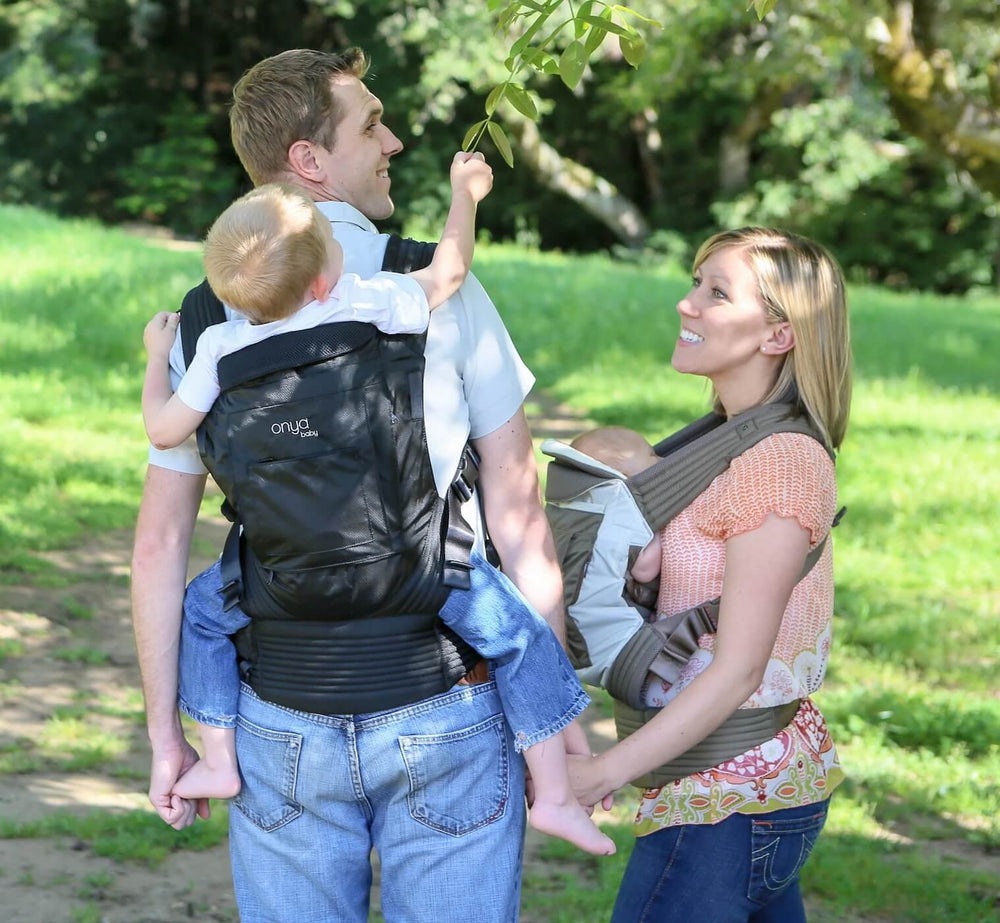Babywearing is Flat-Head Prevention

A study recently released by the Official Journal of the American Academy of Pediatrics indicates that an estimated 46.6% of babies between the ages of 7 to 12 weeks in North America will suffer from positional plagiocephaly, or “flat head syndrome.” (1) That’s nearly one in two babies! This largely preventable syndrome is widely assumed to be the result of over-use of infant holding devices, such as car seats, swings and bouncy seats, as well as the rise of the “Back to Sleep” program (2), which started in North America in 1994 (3). So, what’s the good news? Babywearing is flat-head prevention.
Babywearing is an easy and convenient tool that you can use daily to prevent plagiocephaly, flat-head in your baby. By regularly carrying your baby in a sling, wrap or baby carrier, you’re already well on your way to giving your baby a well-developed round head, just as nature intended. Generally speaking, “tummy time” is often the only recommendation we see as a technique to prevent flat heads in babies. We’d like to add babywearing to the top of the list. Many babies simply will not abide tummy time, but cuddling them close feels natural, comforting and safe.

Not only is the prevention of plagiocephaly an important goal, but it’s developmentally important for babies to hold their head up, grasp at items, look around at the world. It’s important for their fine and gross muscular development, as well as for their overall emotional and intellectual development (4). But if you’ve ever tried to do “tummy time” with your baby, you might have discovered that your baby wasn’t fond of the practice. Babywearing allows a baby to exercise his head, neck, back and core muscles, as well as develop gross and fine motor skills through grasping at the cloth of the carrier or a toy you’ve hung there for him. And you don’t have to schedule it in, as is the general recommendation for tummy time. When you use you baby carrier, your baby’s getting the developmentally important exercise he needs and you can simply get on with the things that need to be done. Win-win!
Of course, it’s important to note that if your baby wants to get down and explore the floor, let him. That’s wonderful for him, too. Just pay attention to your baby’s cues. You know your baby best.
Speaking of exercise, babywearing is also fabulous weight-bearing exercise for you! You and baby, both getting the moves you need. But that’s another post altogether, isn’t it? Why yes, actually. Yes it is.
For more information on babywearing, tummy time and the prevention of plagiocephaly, have a look at this post.
How about you? Do you wear your baby instead of scheduling in “tummy time?”
Happy babywearing!
This post has been translated into Portuguese by Thiago Queiroz, and can be found over on Paizinho, Vírgula! Thank you, Thiago!
References:
1. Mawji, Aliyah, RN, Phd., Vollman, Ardene Robinson, RN, PhD., Hatfield, Jennifer, PhD., et al. The Incidence of Positional Plagiocephaly: A Cohort Study. Pediatrics, The Official Journal of the American Academy of Pediatrics. 8 July, 2013.
2. Littlefield, Timothy R., MS. Car Seats, Infant Carriers, and Swings: Their Role in Deformational Plagiocephaly. American Academy of Orthotists and Prosthetists. JPO, 2003, Vol. 15, No. 3. pp. 102-106.
3. “Safe to Sleep” Official Webpage of the Eunice Kennedy Shriver National Institute of Child Health and Human Development. http://www.nichd.nih.gov/health/topics/sids








